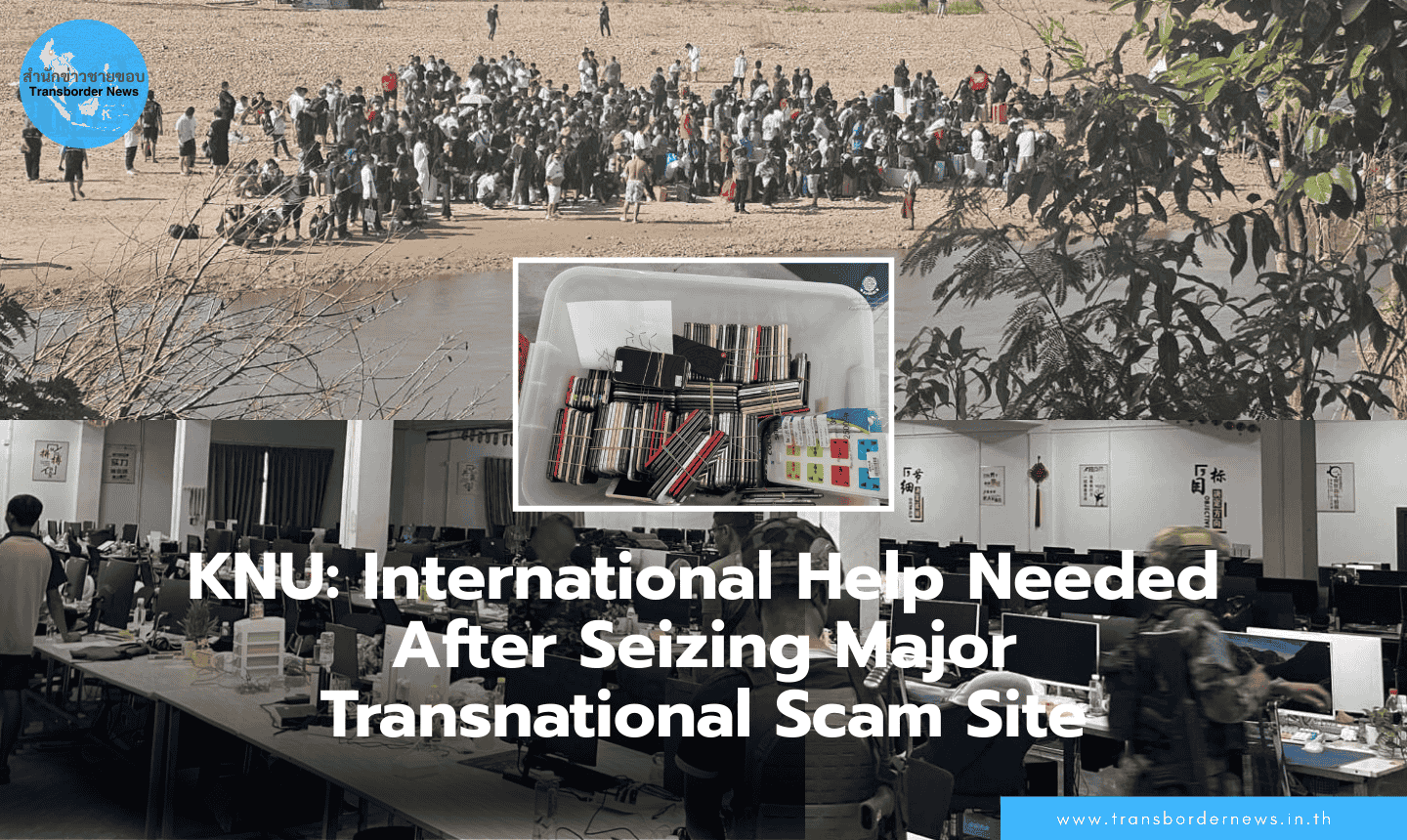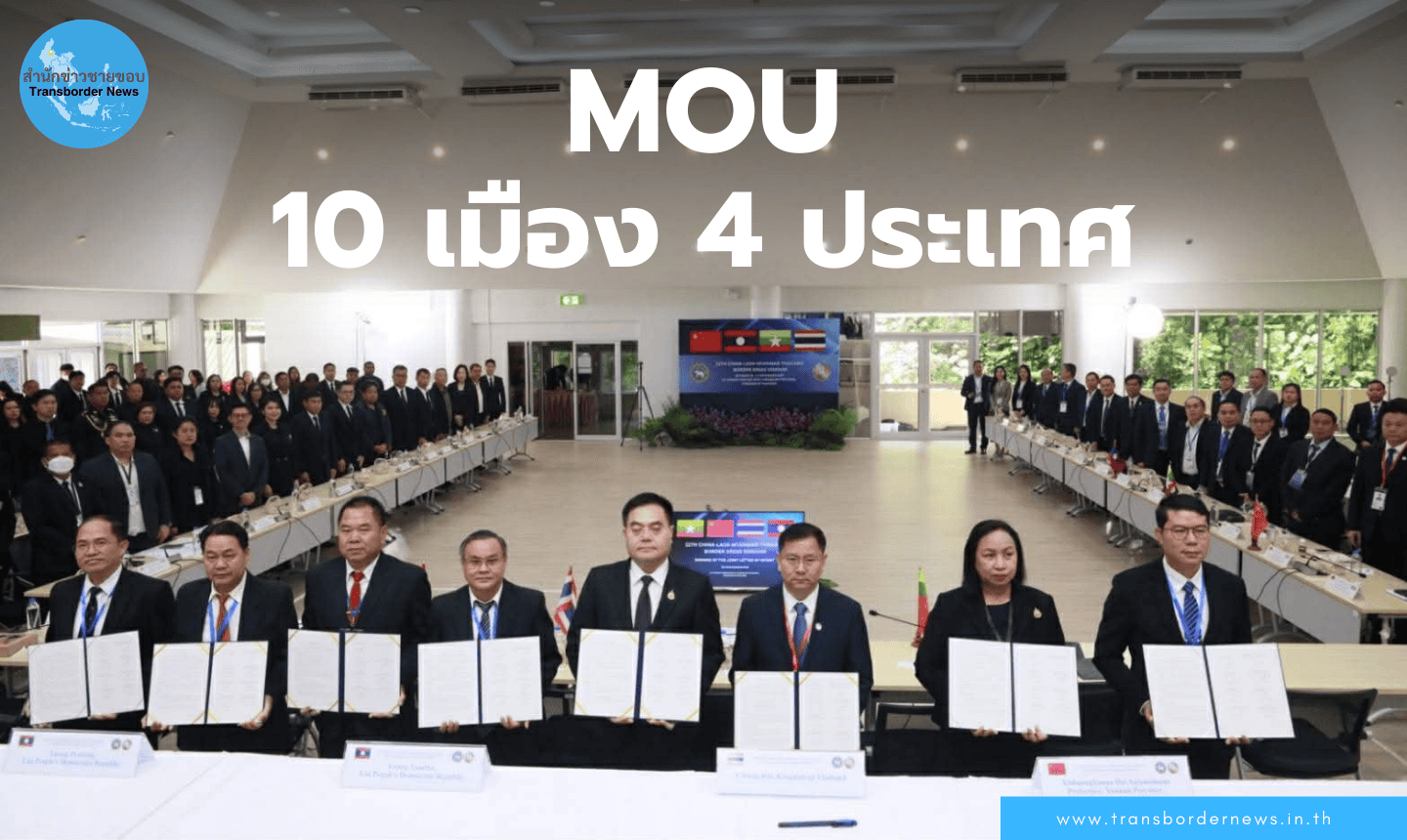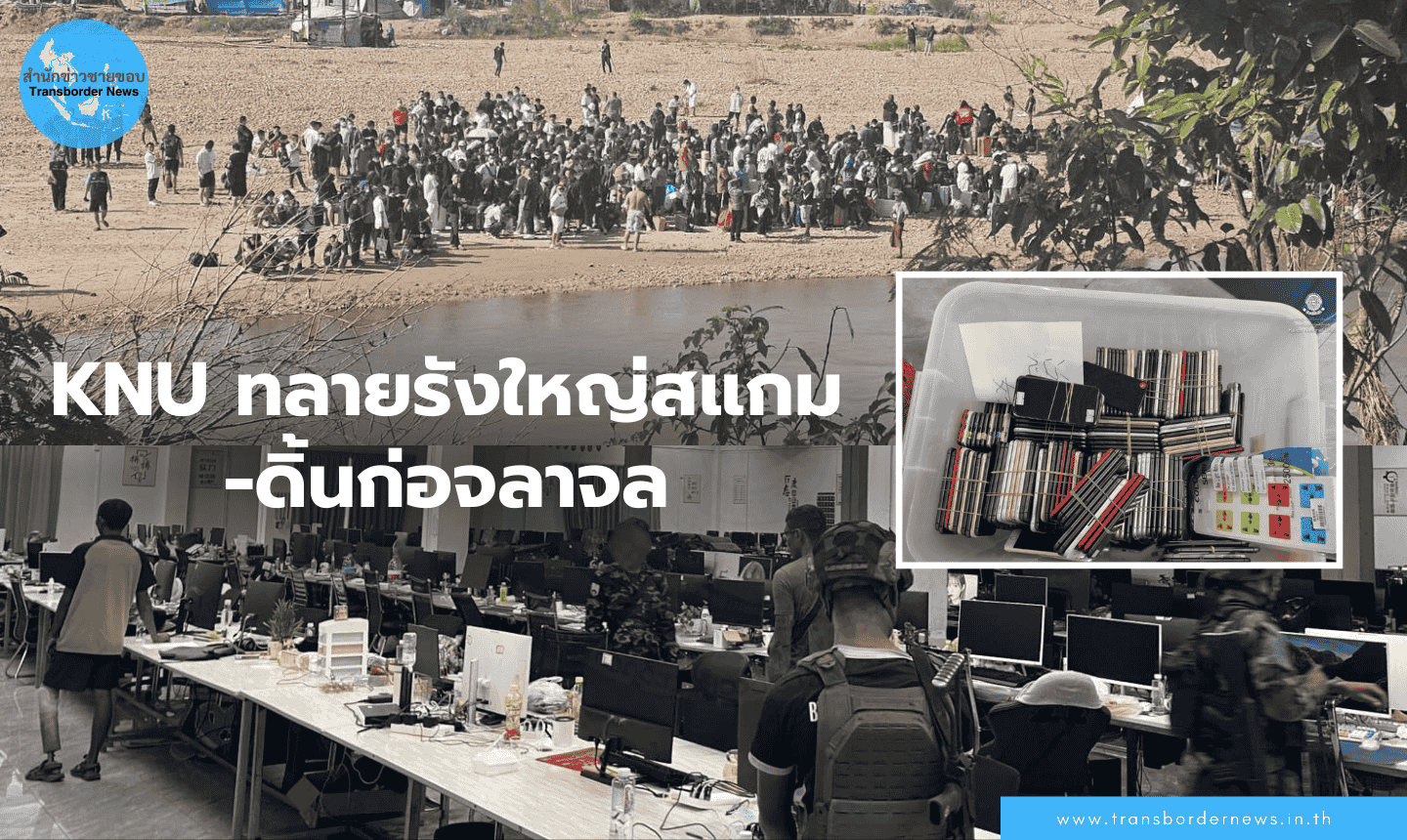
Transborder News: Chiang Rai Governor Charin Thongsuk addressed concerns over the unusually murky water in the Mae Kok River, which flows through Mueang Chiang Rai District. The governor stated that he was unaware of the situation but had ordered the provincial Office of Natural Resources and Environment (NRE) to collect water samples for analysis.
A local boat operator in the Mae Kok River reported that the water had remained turbid since September 2024, following a major disaster. Normally, during the dry season, particularly in March and April, the river is clear and attracts tourists for Songkran celebrations. However, boat operators in Tha Ton, Mae Ai District, Chiang Mai, believe the turbidity originates from mining activities in Mong Sart, Shan State, Myanmar. They fear that this may deter tourists from visiting this year.
“If Myanmar authorities were considerate, they would halt mining operations during Songkran so the river could clear up. Right now, no one wants to swim in the river because they don’t trust the water. It’s too murky, and they don’t know what contaminants might be present. Government agencies should investigate and inform the public whether it is safe to use the water. The river has remained turbid for six months since the flood, and yet no action has been taken to resolve the issue,” said the boat operator.
Satellite imagery from Google Earth reveals extensive land excavation along the Mae Kok River in Mong Sart, just 30 kilometers from the Thai border. Local sources confirm that gold mining operations there are run by Chinese companies under concessions granted by the United Wa State Army (UWSA), which took control of the area from Shan forces over 20 years ago. The mining sites are strictly guarded by armed men, preventing local villagers from approaching or taking photographs.
Somporn Phengkham, director of the Community-Based Health Impact Assessment Institute, warned that if the sediment flooding into Mueang Chiang Rai and Mae Sai Districts originates from gold mining, there is a high risk of toxic contamination affecting both communities and ecosystems. Open-pit mining involves stacking excavated earth before ore processing. If this soil is washed into the river, it could contain arsenic, which would then spread through the water system.
Somporn also noted that modern gold processing uses cyanide, which must be carefully managed to prevent environmental leaks. Additionally, small- and medium-scale mines often use mercury, which, if released, could enter the food chain through predatory fish. She stressed the importance of conducting proper tests for heavy metals, including arsenic in river sediments and mercury in fish, with input from local fishers who understand which species are most at risk.
“If we use the wrong testing methods, we might misinterpret the results and misinform the public. Communities should be given the correct information so they can take precautions. The first step is to determine what type of mining is taking place and address contamination at its source,” Somporn stated.
Somdul Uttcharoen, a Member of Parliament for Chiang Mai’s District 7 (Mae Ai and Fang) from the People’s Party, has submitted a complaint to the parliamentary Committee on Land, Natural Resources, and Environment regarding the pollution concerns. He expects the committee to conduct an investigation after the upcoming no-confidence debate.
Somdul also posted on Facebook, calling for an urgent probe into gold mining operations just seven kilometers from the Thai border. He warned that potential toxic runoff from the mines could explain the persistent turbidity, reports of fish deaths, and growing public concerns over water safety, especially after recent floods deposited thick layers of sediment in affected areas.
“This is not just an environmental issue—it is a matter of life and death for local communities. The government must act now. First, authorities must conduct an immediate water quality assessment to determine risks to public health. Second, we need long-term transboundary environmental cooperation to prevent further damage to shared water sources and address broader issues such as cross-border air pollution,” Somdul said.
“The Mae Kok River is more than just a natural waterway; it sustains the livelihoods of communities on both sides of the border. We must work together to protect it before the damage becomes irreversible,” he added.
When asked how Thailand could address the issue if the pollution originates from upstream in Myanmar, Somdul acknowledged the political sensitivities, as ethnic armed groups control the mining areas. However, he insisted that the Thai government must take action, given the cross-border impact.
“Preliminary satellite images suggest that over 1,000 rai of land near the Mae Kok headwaters have been cleared. Large buildings have been constructed, possibly for ore processing, but the area is guarded, preventing independent verification. This is not just a Tha Ton problem; it affects the entire river basin. Chiang Rai also relies on the Mae Kok for tap water. If contamination is present, it could have serious consequences,” he warned.
In response to growing concerns, Governor Charin Thongsuk has directed the Chiang Rai Office of Natural Resources and Environment to coordinate with the Regional Environmental Office 1 to collect water samples from the Mae Kok River on March 24, 2025. Relevant agencies will participate in the testing.
An official from the Chiang Rai NRE Office confirmed that this year’s persistent turbidity is highly unusual for the dry season. The agency will collaborate with local authorities and the Provincial Waterworks Authority to conduct detailed tests for heavy metals in the water at three locations—upstream, midstream, and downstream.
“Normally, surface water quality is tested quarterly. However, given concerns about heavy metal contamination, we will conduct more thorough testing this time,” the official stated.
Please see original Thai articles,
https://transbordernews.in.th/home/?p=41785
https://transbordernews.in.th/home/?p=41776




